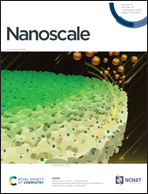Phosphorus-modified two-dimensional graphdiyne (CnH2n−2)/ZnCdS forms S-scheme heterojunctions for photocatalytic hydrogen production
Abstract
Graphdiyne (GDY) is a new type of carbon allotrope material with a network structure composed of sp- and sp2-hybridized carbon, and its excellent photoelectrochemical properties have an extraordinary impact on energy materials. In this work, a graphite alkyne material was calcined and used as an anchor substrate to fix bimetallic sulfide–zinc–cadmium sulfide to form a phosphorus-doped graphdiyne (GDY-P)/zinc–cadmium sulfide (ZnCdS) heterojunction photocatalyst. The close contact between the 2D/0D binary heterojunction interfaces produced a strong interfacial force, and the final hydrogen evolution rate of the GDY-P/ZnCdS structure reached 10 395.57 μmol g−1 h−1, which was 2.57 and 240 times those of ZnCdS and GDY, respectively. The S-scheme heterojunction constructed by GDY-P and ZnCdS accelerates the formation of electron–hole pairs, improves the utilization of strongly reduced electrons, and overcomes the self-agglomeration of ZnCdS, ensuring the high hydrogen evolution activity of the binary structure. This work provides a new application paradigm for the construction of S-scheme heterojunctions for hydrogen evolution using new carbon materials in the field of photocatalysis.



 Please wait while we load your content...
Please wait while we load your content...